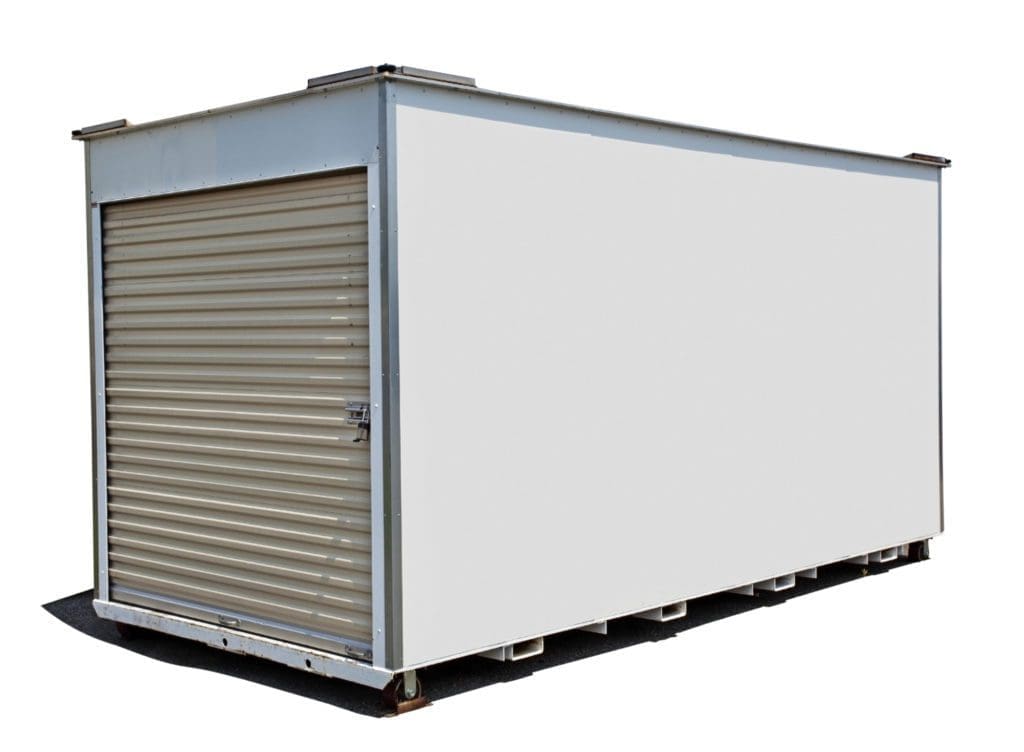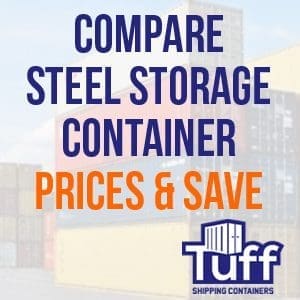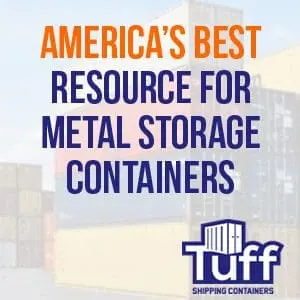
Shipping Container Grades and What They Mean for Buyers
When it comes to buying a shipping container, the grade of the container is one of the most crucial factors to consider. This grade tells you about the container’s quality, condition, and previous usage, allowing you to make an informed decision about whether it suits your needs. But what do these grades mean, and how do they affect your buying decision? This guide will delve into the world of shipping container grades, offering a comprehensive understanding of what they mean for potential buyers.
Understanding Shipping Container Grades
Container grades provide insights into the history and condition of a shipping container. The grading system varies slightly depending on the region and the company selling the containers, but there are generally three grades common across the industry:
- New or ‘One-Trip’ Containers: These containers are the highest grade available. As the name suggests, they have only made one trip, usually from the manufacturer to the seller with cargo. This grade represents the cream of the crop, virtually untouched with minimal wear and tear, and no significant damages. They are the most expensive option, but their pristine condition can be worth the cost, especially for uses that require a clean, secure, and watertight environment.
- Cargo Worthy (CW) Containers: Cargo Worthy containers have seen more use, typically coming directly from shipping services. Though they may have some cosmetic damage, such as dents and surface rust, they are still deemed seaworthy and capable of handling cargo for international shipping. Before a container can be certified as CW, it must pass an inspection that ensures it is wind and water-tight, structurally sound, and has a valid CSC (Convention for Safe Containers) plate.
- Wind and Water Tight (WWT) Containers: WWT containers are typically older units retired from shipping service. They show signs of age and wear, with cosmetic issues more prevalent. However, they are still structurally sound and, crucially, wind and water-tight. These containers may not be suitable for international shipping but are excellent for static storage use or for conversions where the external appearance is less critical.




Choosing the Right Grade
The ideal container grade for you depends on your specific needs, budget, and the level of modification or restoration you’re willing to undertake.
- One-trip containers are perfect if you need a near-new condition unit for a project like a container home, or pop-up shop, or if you require a clean and secure environment to store valuable items. They’re also ideal if you plan on shipping goods internationally.
- CW containers are a cost-effective choice for buyers needing a secure, robust container for international shipping or domestic transportation of goods.
- WWT containers are the most affordable option and are suitable for uses such as static storage, where the container will be sitting in one place, and aesthetic considerations are secondary to functionality and cost.
Inspecting Your Chosen Container
No matter the grade you choose, it’s essential to inspect the container before finalizing your purchase. Look for significant structural damage, check that doors open, close, and seal correctly, ensure the container is watertight, and inspect for any signs of corrosion beyond surface rust.
Understanding shipping container grades is vital for making an informed purchase decision. By recognizing what these grades mean, you can ensure that you choose the right container for your specific needs and avoid potential disappointments or unexpected costs down the line. Whether you opt for a new one-trip container, a cargo-worthy unit, or a wind and water-tight model, there’s a shipping container out there that fits your budget and your project requirements. Remember, the success of your venture begins with choosing the right container.
Why Do Shipping Container Grades Matter?
Shipping container grades matter significantly because they provide insight into the condition and quality of the container you’re purchasing. They essentially provide a shorthand for understanding the container’s history and can guide you in making an informed decision, especially in relation to the kind of project you’re planning.
Grades matter for several reasons:
Assured Quality
Firstly, the grading of shipping containers offers a certain level of quality assurance. By knowing the grade of a container, you can set realistic expectations for its condition. For instance, a one-trip container will have less wear and tear compared to a WWT container. This way, you can ensure that you’re getting the value you’re paying for.
Cost Estimation
Secondly, grades play a significant role in cost estimation. A higher-grade container like the one-trip variant will be priced higher than its CW and WWT counterparts due to its superior condition. Thus, knowing the grade of a container allows you to budget appropriately for your project.
Project Compatibility
Moreover, the grade of a shipping container is a crucial determinant in assessing its compatibility with your project. For instance, if you’re planning to use the container for a construction project like a container home or a pop-up shop, a one-trip or high-grade CW container would be more suitable due to their better aesthetic condition.




They would require less repair work, offer a cleaner interior, and ensure better structural integrity, providing a sturdy base for any modifications. On the other hand, if the container is intended for storage use and the aesthetic appeal is not of utmost importance, a WWT container could suffice. This could save you money while still offering a structurally sound and weather-resistant storage solution.
Regulatory Compliance
For those planning on using the container for shipping goods, grades matter for regulatory compliance. To be used in international shipping, a container needs to be ‘cargo worthy’ and have a valid CSC (Convention for Safe Containers) plate. The plate proves that the container has passed the necessary inspections and is deemed safe for transporting goods.
Understanding Longevity and Maintenance
Lastly, the grade can also provide insight into the expected longevity and the level of maintenance a container might require. New or one-trip containers, with their minimal wear and tear, will naturally last longer and require less maintenance than an older, WWT container.
Understanding the grade of a shipping container you’re interested in purchasing is paramount to ensure it aligns with your project needs and expectations. Keep in mind that the type of project, your budget, and the container’s intended use should all play a part in your decision-making process. Ultimately, the grade of the shipping container you choose will have a significant impact on the success of your project. Always remember, the right container can set a solid foundation for your project’s success.
Buying New vs Used Shipping Containers: What Should You Choose?
Shipping containers come in various conditions and grades, as we’ve discussed earlier. One of the most fundamental distinctions you’ll need to consider is whether to invest in a new or used container. Here, we’re going to explore the pros and cons of each to help you make an informed decision.
Pros of New Containers
- Reliable Condition
A new shipping container, often classified as a ‘one-trip’ container, has made a single journey from the manufacturer to the buyer, generally carrying cargo to offset transport costs. Since it has only made one trip, it is in excellent condition with minimal wear and tear.
- Longevity
Being new, these containers have a longer lifespan compared to used containers. If well-maintained, they can last for many years, providing a solid return on investment.
- Clean and Odor-Free
New containers are often clean and free from any odors associated with the transport of goods. This can be a critical factor if you’re using the container for a living space or a workspace.



Cons of New Containers
- Cost
The main downside to new shipping containers is cost. They can be significantly more expensive than their used counterparts. The added expense may be worth it for some, especially if the container is going to be modified or used as a living space.
Pros of Used Containers
- Cost-Effective
The most prominent benefit of buying a used shipping container is the cost savings. They are typically significantly cheaper than new ones, making them an attractive option if budget is a concern.
- Availability
Used shipping containers are widely available, given that they are frequently retired from shipping service after a certain number of years or trips.
- Eco-Friendly
Buying used is an excellent form of recycling. By repurposing a used shipping container, you’re extending its life and reducing the demand for new manufacturing.
Cons of Used Containers
- Wear and Tear
Used shipping containers will show signs of wear and tear. This could include dents, rust, and old cargo residues. If you’re considering a used container, inspect it thoroughly to ensure it’s in a condition suitable for your intended use.
- Shorter Lifespan
While used containers can still offer many years of service, they will naturally have a shorter lifespan compared to a new container. The impact of this will depend on your project and the condition of the container.
- Final Thoughts
In the end, the decision between buying a new or used shipping container will depend on your specific needs, budget, and the project you have in mind. Both options have their own set of advantages and drawbacks, so weigh these factors carefully. Ensure to work with a reputable container seller, and don’t hesitate to ask for advice tailored to your unique situation.




Adapting Shipping Containers for Various Uses
The versatility of shipping containers makes them ideal for a multitude of uses. Their durable structure, uniform size, and transportability provide an excellent foundation for various modifications. Here are some creative ways that shipping containers have been adapted:
Homes and Offices
One of the most common uses for shipping containers is transforming them into living spaces or workplaces. With some insulation, electrical work, and interior design, these robust steel structures can become:
- Shipping Container Homes: From compact, single-container dwellings to elaborate multi-container mansions, these homes can be as simple or as luxurious as your imagination and budget allow.
- Office Spaces: Shipping containers provide a quick and cost-effective solution for businesses needing additional office space. They can be customized with windows, doors, electricity, and air conditioning to create a comfortable working environment.
Restaurants and Cafés
In the hospitality industry, shipping containers have found a unique niche:
- Restaurants and Cafés: Due to their modularity, containers can be stacked and arranged to create unique, hip spaces for dining. They’re particularly popular in the fast-casual dining and coffee shop sector.
Recreational Uses
For leisure and recreation, shipping containers have proven their worth:
- Swimming Pools: With their leak-proof structure, shipping containers can be converted into chic, above-ground pools. They can be customized to various lengths and depths, depending on your needs.
- Gyms and Yoga Studios: A shipping container can be an excellent space for a private gym or a tranquil yoga studio, providing a unique workout or relaxation experience.
Retail Outlets and Pop-up Shops
In the retail sector, shipping containers offer flexibility and mobility:
- Retail Outlets: Businesses have repurposed shipping containers as permanent or semi-permanent retail spaces. Their trendy aesthetic and customization potential make them a hit with customers.
- Pop-up Shops: For temporary retail needs, like holiday markets or promotional events, shipping containers are an excellent choice. They’re easily transported and can be customized to match any brand aesthetic.
Other Uses
The possibilities are virtually endless:
- Art Studios or Galleries: The unique ambiance of a shipping container can lend itself well to creative spaces.
- Greenhouses: With a few modifications, a shipping container can become a year-round greenhouse.
By understanding the myriad of ways shipping containers can be repurposed, it’s clear that buying one is an investment in a versatile and adaptable structure.




Environmental Benefits of Shipping Containers
In our modern age, the importance of sustainability cannot be overstated. A major advantage of using shipping containers for various projects is their positive impact on the environment. Shipping containers offer a unique opportunity to reuse and repurpose existing materials, significantly reducing the ecological footprint of your project.
Recycling at Its Best
Every time a shipping container is repurposed, it prevents the disposal of approximately 8000 lbs of steel. That’s a significant contribution towards waste reduction! When we opt for repurposing these sturdy steel boxes, we effectively engage in a high-impact recycling activity.
Lowering Material Consumption
By reusing shipping containers as building structures, we are also reducing the need for conventional construction materials such as bricks, cement, and wood. This not only decreases the extraction of natural resources but also reduces the energy consumption and greenhouse gas emissions associated with manufacturing these traditional materials.
Reducing Site Disturbance
The construction process of traditional buildings usually involves significant ground disturbance and site preparation. In contrast, shipping containers can often be placed with minimal site disruption, preserving the natural environment around the build site. This is especially important in sensitive ecological areas.
Energy Efficiency Opportunities
While the insulation of shipping containers is a critical consideration for their adaptation, it also presents an opportunity for implementing energy-efficient solutions. High-quality insulation, along with solar panels or green roofs, can create a shipping container building that is not only environmentally friendly but also energy-efficient and cost-effective in the long run.
By choosing to invest in a shipping container, you are not only opting for a flexible, cost-effective solution, but you are also making an environmentally-conscious decision. This sustainable choice contributes positively to the global effort to reduce waste and conserve natural resources. It’s clear that the humble shipping container offers significant ecological advantages, adding to its appeal for various applications.


Shipping Container Customization Options
Shipping containers are far from being monotonous metal boxes. In fact, they can be easily transformed into a variety of unique spaces with the right customization. Regardless of the initial condition of shipping containers, they can be altered to accommodate your specific needs, adding value, functionality, and aesthetic appeal to your project.
Interior and Exterior Finishing
First and foremost, shipping containers can be customized from the inside out. The interior can be outfitted with insulation, electrical wiring, plumbing, and HVAC systems to create a comfortable living or working environment. The exterior can be treated with paint or cladding to blend into its surroundings or stand out as a modern architectural statement.
Door and Window Installations
Shipping containers typically come with cargo doors on one end. However, you have the flexibility to add different types of doors wherever you want. This includes standard entry doors, sliding glass doors, or even roll-up doors for easy access. Windows can be cut into the container to introduce natural light and ventilation. To ensure your container remains weathertight, door seals can be checked and replaced if necessary.
Structural Modifications
Shipping containers are designed for international transport, which means they have robust structural integrity. However, they can still be modified structurally to suit your needs. This could include removing or adding walls, installing partitions, or stacking containers to create a multi-story structure. Even minor dents can be repaired to ensure your container looks its best.
Fitting Out as Storage Units
For those needing storage solutions, shipping containers can be outfitted with shelving, racks, or other organizational systems to maximize space utilization. They are a popular choice for both personal and commercial storage units due to their durability and security.
Quality Grades
If you’re in the market for a shipping container, you may come across terms like ‘IICL containers’ or ‘Cargo Worthy’. These are grades indicating the container’s quality and suitability for different uses. IICL containers, for example, are the best quality used containers available and are suitable for prolonged international shipping use. Understanding these grades can help you make an informed purchase decision.
With the right planning and creativity, your shipping container can be transformed into a unique space that truly meets your needs and preferences. Whether you want a cozy home, an efficient office, or a secure storage unit, the customization possibilities with shipping containers are virtually endless.




Understanding Shipping Container Dimensions
When planning a project involving shipping containers, understanding their dimensions is critical. Shipping containers come in a variety of standard sizes, each offering a unique set of advantages based on your specific needs. This knowledge will not only help you visualize the space you’ll be working with but also make informed decisions about your purchase.
Standard Shipping Container Sizes
Shipping containers come in two standard lengths: 20 feet and 40 feet. Additionally, there are high-cube containers, which are 9 feet 6 inches tall, as compared to the standard height of 8 feet 6 inches.
20-Foot Containers
A 20-foot container typically measures 20 feet long, 8 feet wide, and 8.5 feet high. The interior dimensions are slightly less due to the thickness of the walls. This size is approximately equivalent to a single garage and is often used for smaller projects or storage.
40-Foot Containers
A 40-foot container doubles the length of a 20-footer, offering much more interior space. These containers are popular for larger projects, such as homes or commercial spaces.
High-Cube Containers
For projects that require extra headroom, a high-cube container is a perfect choice. These containers are an additional foot taller than the standard ones, making them ideal for residential or office conversions.
Understanding Container Dimensions and Your Project
The dimensions of your shipping container will largely determine the scope and design of your project. Here’s what you need to consider:
- Interior Space: The interior dimensions of a container determine how much livable or usable space you have. Always consider the thickness of insulation and interior cladding when planning your space.
- Stacking: If you plan to stack your containers or place them side by side, you need to ensure you have sufficient space on your property and that your design is structurally sound.
- Transport and Delivery: Consider the dimensions when planning for the transport and delivery of your container. Ensure that there’s sufficient clearance and access for the delivery vehicle.
- Local Regulations: Check your local building codes and regulations. Some areas have restrictions on the size and placement of shipping containers.
Understanding the dimensions of shipping containers can guide your project from the concept stage to reality. This knowledge will help you choose the right container for your needs, budget, and space constraints. From there, the possibilities of what you can create are only limited by your imagination!




Inspection Tips Before Buying a Shipping Container
When purchasing a shipping container, conducting a thorough inspection is essential. The condition of your container can significantly affect your project, so it’s crucial to know what to look for. Whether you’re dealing with cargo containers or storage units, these tips will help ensure you choose a unit that is in good condition and suitable for your needs.
1. Check the Container Grade
Different grades are assigned to shipping containers based on their condition. These grades can give you an idea of how the container was used before it was sold.
- New or One-Trip Containers: These are the best quality containers that have made only one trip transporting goods. They are in excellent condition, with minimal or no signs of wear and tear.
- Cargo Worthy (CW) Containers: These containers are used, but still in good enough condition to be used for international transport. They will have signs of use, but no structural problems.
- As is Containers: These are the lowest grade and have visible damage or wear. These are suitable for projects where the appearance and structural integrity are not of prime concern.
2. Look for Structural Damage
Shipping containers are made of steel and designed to withstand heavy machinery and harsh weather conditions. However, rust, dents, and cracks can still occur. Inspect the container carefully for any signs of such damage.
3. Inspect the Door Seals
The door seals should be in good condition to ensure the container is weatherproof. If the seals are damaged, water and pests can get inside the container.
4. Check for Rust
Although shipping containers are designed to resist rust, they aren’t immune to it. Check the container for any signs of rust, especially around the doors and the roof. Some surface rust is normal, but extensive rust or deep rust could be a sign of trouble.
5. Inspect the Interior
Check the interior of the container for signs of leaks, mold, and pests. Pay close attention to the corners and the ceiling, where leaks are most likely to occur.
By following these inspection tips, you can ensure that you select a shipping container in a condition that best suits your project’s needs and your budget. Remember, it’s better to take your time and choose wisely than rush into a purchase that you might regret in the long run.



Cost Breakdown of Purchasing and Repurposing a Shipping Container
When considering the purchase of a shipping container, it’s important to look beyond the initial price tag. There are several costs associated with buying and repurposing a shipping container. To help you make an informed decision, let’s take a closer look at the typical cost breakdown.
1. Purchase Cost
The cost of a shipping container can vary widely based on its size, age, condition, and the vendor you’re purchasing from. On average, here’s what you might expect to pay:
- New or One-Trip Container: Expect to pay between $3,000 to $5,000 for a new 20-foot container and $5,500 to $7,500 for a new 40-foot container.
- Used Container: Used containers can range from $1,200 to $3,000 for a 20-foot unit and $1,500 to $4,500 for a 40-foot unit. The price will depend largely on the container’s condition and age.
2. Delivery Cost
Shipping containers are bulky and heavy, so transporting them to your site can be quite costly. Delivery costs can range from $200 to $500 for local deliveries, but the price could increase significantly for long-distance or difficult deliveries. It’s always a good idea to get a quote for delivery before finalizing your purchase.
3. Site Preparation
Before your shipping container arrives, you’ll need to prepare the site. This could involve grading the land, laying a foundation, or even obtaining necessary permits. The costs can vary widely depending on your local regulations and the specific site requirements but expect to budget at least a few hundred dollars for this.
4. Container Modification
If you plan to modify your shipping container — for instance, by adding windows, doors, insulation, electrical systems, plumbing, etc. — these modifications can significantly add to your costs. Simple modifications like adding a man-door or a window can cost a few hundred dollars each, while more complex modifications like installing HVAC systems can run into the thousands.
5. Maintenance Costs
Lastly, don’t forget to factor in the maintenance costs. While shipping containers are known for their durability, they still require some maintenance. You’ll need to account for the costs of regular painting to prevent rust, and potential repair costs down the line.
While the initial cost of a shipping container might seem attractive, it’s important to consider all the associated costs. By doing so, you can ensure that your shipping container project stays within budget and meets your expectations.

Leave a Reply